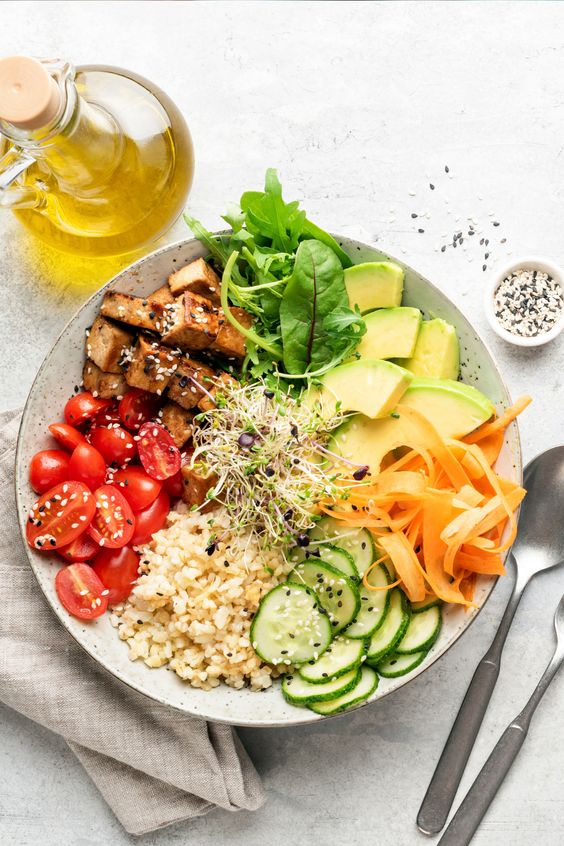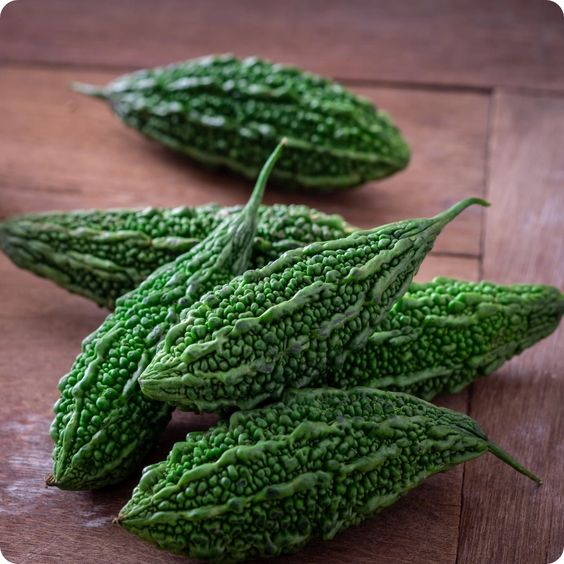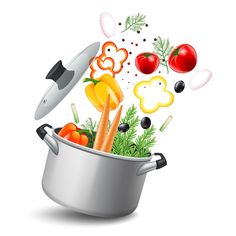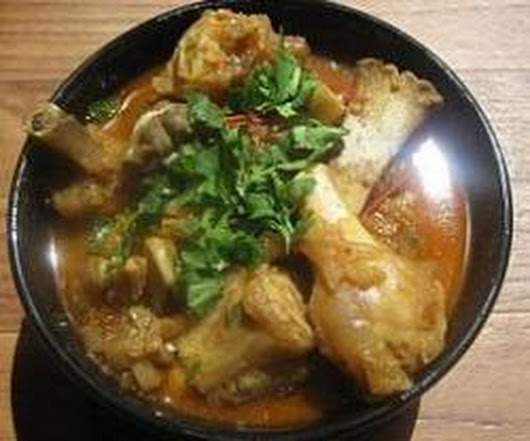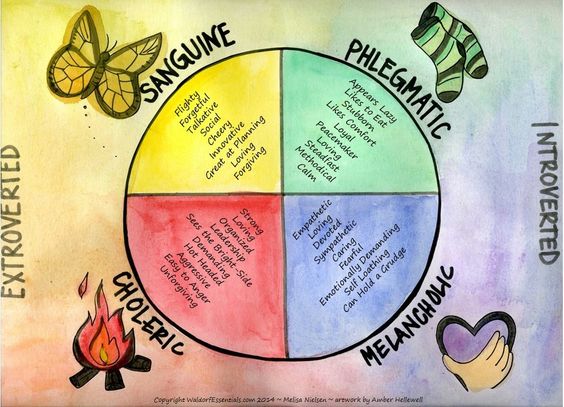Food is honor
 Some nations are honorable because of certain good qualities. The same food and hospitality are also good features of a house or nation so great that they make them stand out from other houses or nations. In the past, many families were respectable because their members offered good food to every guest with honor. Some poor families had a very respectable position only because of their food and hospitality.
Some nations are honorable because of certain good qualities. The same food and hospitality are also good features of a house or nation so great that they make them stand out from other houses or nations. In the past, many families were respectable because their members offered good food to every guest with honor. Some poor families had a very respectable position only because of their food and hospitality.
Even today, the more generous one is in the matter of feeding, the society gives him a place of great honor. The fact that people who feed others good food are not only respectable but also have very good character. Thus, food and human dignity go hand in hand.
All over the world, a person known as Hatim Tai is considered popular and respected only because he used to serve good food to his guests in a good way. And there are many examples. Feeding a guest good food in a good way brings a lot of dignity and honor to a person.
Here is a summary of famous blogger Salmi Hussain’s writing, which shows human behavior, honor, dignity, food history, and civilization related to food in the Mughal era of the subcontinent.
Food History Of Mughal Era In India
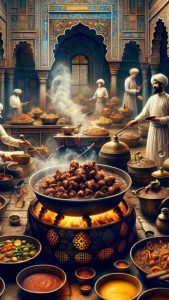 Have you ever seen the exterior of the east gate of the Shahi Jama Masjid in Delhi? Did you see the appearance and the image? Was it built in a day? made’; The same is true for Delhi as well. As the famous English saying goes, ‘Rome was not built in a day.” The same is true for Delhi. With time, not only its name and culture changed, but also its tastes.
Have you ever seen the exterior of the east gate of the Shahi Jama Masjid in Delhi? Did you see the appearance and the image? Was it built in a day? made’; The same is true for Delhi as well. As the famous English saying goes, ‘Rome was not built in a day.” The same is true for Delhi. With time, not only its name and culture changed, but also its tastes.
There is no denying the fact that during the year 1639, when Mughal Emperor Shah Jahan founded Shahjahanabad, it proved to be the most blessed. It was built by Mughal Emperor Shah Jahan and completed in 1656. It became an honor for India.
Delhi is the land that proved to be the center of glory for the Mughals; it was the center of poetry; it was the beginning of the money rail; and the center of Shahjahanabad’s splendor was the square. Its markets were full of commotion and splendor. The bowler is playing the bowl, ‘Mian ab is hayat hai, not a syrupy friend! (The soup of this cup is like water.)̔’
Food Street In Old Dehli
“Take it, brother, take it, Laili ki Angalyan (the food is likened to Laila’s finger, the character of the famous love story Laila Majnu), Majnu ki paste (what a funny simile! This food is so tender as Majnu ribs.” Hot dishes are piled up on the trays. Cloves, large pennies, tai kebabs (roasted meat iron bars), and kelji (liver meat) skewers. Customer after customer breaks down. Wow, what a scene! Whether you eat or not, your health will be satisfied with the aroma.
Salma Hussain is a cooking enthusiast, an expert cook, and a food historian. Her knowledge of Persian revealed the mysteries of the history of medieval Mughal cuisine to her. She has also written several books and works as a food consultant for major hotels. She says that if Nihari was a mixture of 12 spices, Haleem was a dish of three types. The royal confectioners sat down to make ginger carrot halwa so delicately that the grapes were supposed to be genuine. Biryani (meat and rice) came in front of Zarda (rice and jaggery), and the customers broke down. This was the scene of Dilli Chowk. It was also an honor to be on the food street.
But what to do with the fact that one day the Mughal Empire fell to such an extent that the hearths of the royal kitchens became cold? The aroma of kebabs and biryani was lost in the air. The shops of Chandni Chowk are deserted, and the voices of the peddlers are lost somewhere; the rhythm and beat have disappeared, as well as honor. During this period, food was given an honor that was perhaps never seen before.
Regime and Food Honor Change
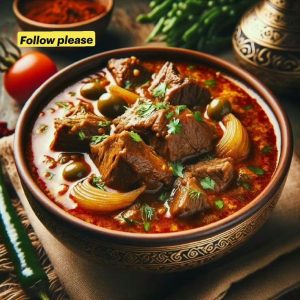 The agonizing partition of the country made Delhi familiar with the tandoor( oven); the hearth started burning, and the hot bread started baking. Restaurants like Moti Mahal made the city famous. Dishes like tandoori chicken (roasted chicken in a clay oven), makhani (creamy) chick, dal makhani (creamy), and Bhatti (oven-like structure) chicken are allowed. Time passed, the stoves of the Muslims became cold, and even the non-Muslims started cooking delicious food. Because of their dietary habits and tastes, the Kayasthas (Hindu caste) are called half-Muslims. They used to eat meat with salad.
The agonizing partition of the country made Delhi familiar with the tandoor( oven); the hearth started burning, and the hot bread started baking. Restaurants like Moti Mahal made the city famous. Dishes like tandoori chicken (roasted chicken in a clay oven), makhani (creamy) chick, dal makhani (creamy), and Bhatti (oven-like structure) chicken are allowed. Time passed, the stoves of the Muslims became cold, and even the non-Muslims started cooking delicious food. Because of their dietary habits and tastes, the Kayasthas (Hindu caste) are called half-Muslims. They used to eat meat with salad.
It is said that Shab Deg (the food that is cooked overnight with turnips, carrots, and meat) is said to be from these people, and the lentils were amazing in taste; fish kofta, crispy okra, and bitter gourd smelled like that. It increases appetite. On the other hand, the merchant Yesha Marwari, who avoided meat and fish, made such delicious dishes of paneer, spinach, Arvi, and besan (chicken powder) that one would not want to finish the meal. Food’s glorious past makes an honorable return.
These garlic and onion dishes are not only healthy but also delicious. Time passed, months and years healed the wounds, and life calmed down a bit. The deserted streets of Delhi were repopulated with the food of the fort. The delicious food cooks, who had disappeared somewhere, then took to the streets of the city and lit their stoves. Even today, their bread is a part of these old food traditions, but where is the delicacy and sophistication?
Dehli Honoured The Food
Delhi is a cauldron in which the flavors of every religion and nation are present. Well, who can deny the fact that the Mughal rulers advanced the art of cooking and made the simple dishes of India an art form? During Muslim rule in the tenth and eleventh centuries, the art of cooking accepted foreign influences. The harmony of the flavors of Iran, Turkey, India, and other countries of the Middle East brought this art to such a high level that even after centuries, this legacy of the Mughals is alive and well among us in the subcontinent.
During the reign of Zahiruddin Muhammad Babur and King Humayun, the royal kitchen did not develop significantly due to Babur’s short reign and Humayun’s exile. But during Akbar’s reign, the royal kitchen was mentioned with great detail and precision. Akbar’s adviser Abul Fazl wrote the contents of ‘Ain Akbari (Akbar Laws) as witnesses that most of the food of Akbar King consisted of wheat, rice, and pulses; that is, the food of Akbari’s era was of three types.
A simple meal is a meal that does not include meat; some meals are cooked together with grains and meat, and some meals are cooked with ghee, curd, and spices. Haleem, Dupiyaza, Zard Rice, and Sher Rice are the dishes of this era that we eat with great enthusiasm even today. Along with Turkish, Afghani, and Iranian food, Indian food also began to adorn the royal table.
Jahangir is also known as an amorous king, and his aesthetic taste is highly appreciated. It is said that most of his leisure time was spent in the beautiful valleys of Kashmir. He was fond of hunting and also used to hunt sparrows. His court chefs, in a quest to please the king, served various species of sparrows at the royal table. Kebabs and curries of pheasant, quail, chicken, duck, etc. were liked by the king.
Noorjahan brought more flair to cuisine with his innovation. History has given the impression that the Mughal rulers were naturally carnivores, the main reason for which is said to be the climate of the place to which they belonged. Meat was associated with strength and bravery, and these qualities were considered essential in a king.
Innumerable meals were prepared daily in the royal kitchen. Some were mature and some were semi-mature, and the moment they got the signal from the king, it became special. The rice flour was boiled with rose water and misri and served on plates after cooling. Perhaps this was the beginning of modern pudding. Rice flour was coated with almonds and chicken meat and mixed with a mixture of rose water and amber to make sweets. It was a favorite dessert at the royal table.
All kinds of pickles, jams, chutneys, fresh ginger sticks, juicy lemons, green coriander, and mint were sealed in different bags. Yogurt-filled saucers were also part of the specialty. Pickles were prepared under the supervision of Shahi Hakim. Syrups and jams made from fruits were appetizing, easy to digest, and a cure for many diseases. Apart from the royal banquets, the king used to dine with his wives and concubines, and no outsider could see the king eating.
Betel was an important part of the Mughal civilization. Betel leaves were mixed with rose water and camphor. Betel nuts were boiled in sandalwood. Lime was prepared by mixing saffron and rose water. A raft of eleven leaves was prepared and served in a special silver dish. Numerous benefits of eating paan have been described. By chewing it, the tongue is soft, the mouth is fragrant, and the stomach is protected from unnecessary gas. Betel nut is constipating, and lime removes bitter and sweet secretions from the mouth. The Mughal capital moved with the king. The Western traveler Bernier writes: As soon as the coach was announced, the royal kitchen would move forward with all its staff and equipment.”
The Italian traveler Manucci wrote:
“The royal kitchen would leave at ten o’clock at night to provide the king with breakfast.”The kitchen caravan consisted of 50 camels with provisions, 50 well-fatted cattle for milk, 200 porters with tableware, a large number of cooks (one cook for one meal), spices, and pieces of velvet. I would travel under the watchful eye of sealers, aqueduct staff, musketeers, torchbearers, and cleaning soldiers.
Such was the honor of food!
The manuscripts of the royal kitchen of the Mughal emperors show that the use of spices in the food was extremely low. Foods were prepared with spices like cumin, coriander, ginger, black pepper, cinnamon, cloves, and fennel. Dry fruits and saffron were used to make the food spicy and delicious, while musk, amber, rose water, and safflower flavored the food. Fine, tasteless, and fragrant foods were the passion and weakness of the kings.
With the arrival of the Portuguese, potatoes and chilies were added in the last period of the Mughal era, and new dishes graced the table. Bahadur Shah’s table was very extensive and was decorated with Turkish, Afghani, Iranian, and Indian food. Korma, Qaliya (salted curry), pulao, naan, kachori (fried snake), kebabs, khandvi gram, Indian sweets, and halwa (sweet dish) came to appreciate the skillful hands of experienced chefs. The description of the food is a testimony to how the Mughal rulers advanced the art of finesse and nutrition and gave it new heights, which survive even today after centuries.
These rulers not only built the Taj Mahal. They are known not only because of the Red Fort but also because the food of their era made them alive and immortal. Salma Hussain further writes that the tables of the Rajas, Maharajas, and Nawabs of India used to be prosperous and magnificent. Each table had a different mood. From east to west and from north to south, every king and nawab was proud of his table. Each table had two or three items from its example for which that table was famous.
Every cook in their kitchen prepares new and different types of food. Thanks to the patronage and appreciation of the kings and nawabs, the best cooks were born, but after some time, the times changed so that they were no longer royal palaces and no sign of skilled cooks remained.
The Charm And Honor of Mughal ٖFoods
 The tireless efforts of Sonal Saxena, the founder of ‘Dine With Royalty’, brought together nearly two dozen royal families from all parts of India in Delhi recently to bring their traditional cuisine to those who crave fine dining. Separate tents were set up for each royal family on the wide lawn of the Belgian embassy in the central capital, Delhi, which were decorated according to their taste.
The tireless efforts of Sonal Saxena, the founder of ‘Dine With Royalty’, brought together nearly two dozen royal families from all parts of India in Delhi recently to bring their traditional cuisine to those who crave fine dining. Separate tents were set up for each royal family on the wide lawn of the Belgian embassy in the central capital, Delhi, which were decorated according to their taste.
Adjacent to each tent was a kitchen where the current chefs of the royal family displayed their skills. Before the royal feast began, the members of the royal family described in detail the dishes they would serve, in which the historical traditions of food, geographical location, external influences, etc. were mentioned. There were some anonymous royal families that we were very happy to know about.
India is a vast kingdom, and many princely states existed in every nook and cranny of it for years, which have become anonymous now. The highlight of the four-day celebration was that the kitchens of later times used to be spacious. The series of royal feasts continued day and night—the number of cooks used to be large. The kitchen used to be divided into several departments. They were looked after by an experienced person named Daruga Kuchi-Ikitchen. Each cook was an expert in his craft, as it was essential to be familiar with fine cuisine to cook well.
Great care was taken for cleanliness and hygiene. On the spacious lawns of the embassy, the kings of India, along with their queens, princes, and princesses, were seated, and this was a rare occasion in the history of independent India. The celebration was not only about food, conversation, and hospitality; music and glasses of wine kept the party intoxicated.
Sonal’s efforts not only brought many states back into the limelight but also encouraged his family chefs, who also took part in carrying on his legacy. Their efforts may save regional traditional foods from extinction. Ambassador of Belgium Jon Lolick and his wife Begum Raka Singh gave a warm welcome to the guests and participated in the celebration. On this occasion, it came to light that regional cuisine needs to be encouraged.
Often, we enjoy the flavors of North India, and the rest of the country is neglected. Such events offer a wealth of information that we are usually not aware of. Salma Hussain says that when I arrived in New Delhi from New Bombay, I was surprised to see the spacious and extensive building of the king’s palace standing on the Rajpath. Being a foodie, the only question that came to mind was how big the kitchen would be in this vast building. How many cooks and servants will work here, and who will eat all the food?
A year ago, as luck would have it, I got the chance to put my imagination to work when Liz (aka Elizabeth Collingham) and I were commissioned to write a book called ‘Round India’s First Table’. Writing this 138-page book was no less than gambling. But it was an interesting and informative trip. Since 1912, no book has been written on the subject, nor has there been any mention of the changes that have taken place in this building.
In 1912, when the British moved their capital from Calcutta to Delhi, the equipment there, along with the cooks and servants, were moved to this vast and spacious building, and signs of life were born in this luxurious building. The English Viceroy and his staff imitated London’s Buckingham Palace in the arrangement here. A staff of around 500 servants was employed to serve the Viceroy’s family and personal guests.
The kitchen of this spacious building was on the lower floor of the building. On one side was the bakery, and on the other side was the liquor store, along with the arrangements for keeping supplies in his rooms. Food was cooked in long furnaces. There was a cold room for making cakes, pastries, and pies with a temperature suitable for making cakes and pastries.
The food was neither Indian nor English, but the new rulers were fond of French cuisine, and the cooks who accompanied them were masters of the art.
Lord Reading specifically instructed Lord Irwin to keep the number of British servants in India extremely small. Time moved quickly, and gradually, changes took place in the management of this vast building. After India’s independence, this building became the official residence of the president, and changes took place with the appointment of each president.
The first Governor General of India Raj Gopal Acharya was a simple man, and he first started his private kitchen, where he had cooks and servants, but the food was purely Indian, prepared by his cook. This process continues even today. Each president has a personal chef who prepares and serves food according to his taste and mood. Thus, English and French cuisine were limited to formal banquets. But this series also ended after a while.
Finding out the detailed history of the English period was very difficult, and in the absence of written documents or any books, it was very difficult. But with the help of the old cook and butler, the task became a little easier, and interesting details and material came to hand. The book consists of four chapters. Formal banquets, the viceroy’s table, the War of Independence and its impact, the president’s formal invitations, and India’s flavors.
Organizing formal banquets is a difficult phase where the importance of the table and the greatness of India are involved. The Banquet Hall is a spacious room where the President receives guests from outside and introduces them to the culture and flavors of India.
The ٖFoods Changes But Not The Status
After independence, the tables of formal banquets began to be decorated with delicious dishes from India, and President Abdul Kalam issued instructions for the convenience of the guests that two dishes from the guest’s own country should be added to the banquet. Apart from this, the tastes of the president’s region should also be included. Gradually, flavors from every region of India became part of ceremonial feasts.
In formal banquets, the attendant’s work includes taking care of the guests, serving food, decorating the room, playing music, selecting candelabras and vases, selecting red and green lights, etc. The meal starts with soup or broth and ends with dessert. At the same time, the cycle of coffee also continues. Food is served in different courses. First soup, then kebab or something similar. In this case, the red and green lights on the door are used to help the attendant. Start eating in green and end in red.
These formal banquets are an important part of politics, where meetings with the president are lighthearted. The stakes of politics do not pass here. These formal invitations are only a message of friendship between the two countries and an introduction to the culture of India. The guests at the formal banquet belong to every sector of the country and highlight the importance of India.
What a high position for food!
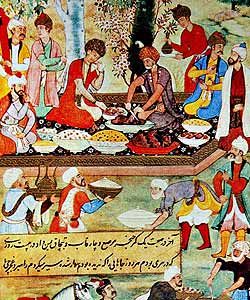 Whenever there is a mention of the royal kitchens of India and the royal dishes prepared in them, Lucknow, Hyderabad, and Rampur come into their circle. One seldom hears or reads about the royal kitchens of the southern parts of India.
Whenever there is a mention of the royal kitchens of India and the royal dishes prepared in them, Lucknow, Hyderabad, and Rampur come into their circle. One seldom hears or reads about the royal kitchens of the southern parts of India.
The Raja Maharajas of South India were just as fond of delicious food as the Nawabs of North India, and their royal kitchens were also exemplary in preparing delicious and varied dishes.
Royal patronage and immense financial resources drove the talent and skill of chefs. The stories of the royal kitchens of Mysore, Arcot, Travancore, and Tanjore are fascinating and delicious. It is said that the treasurer of the royal palace of Mysore organized a magnificent banquet. The cooks got busy with the first rays of the sun. A few hours before the meal began, the treasurer visited the kitchen. He saw a large basket of vegetable scraps in a corner of the kitchen. On inquiry, it was found that these parts of the vegetables are out of use and are of no use. The treasurer asked the cook to be smart and come up with a unique recipe to use them.
The cook, after much deliberation, made a thick broth with a combination of coconut shavings and curd. The usable parts of the vegetables are cut into small pieces, mixed with mild spices, and added to the coconut broth. The mixture was allowed to cook on low heat and served as a new dish at the evening banquet. The guests at the banquet eagerly enjoyed the new dish and discovered its name. The cook immediately said, ‘Avil’. From that day on, it always became the ornament of the royal table, and till today, it is considered one of the most delicious dishes in South India.
Food Was a Symbol of Honour Of The State
It is a unique experience for a skilled and intelligent chef. Travancore is a famous state in South India. The riches and the patronage of lavish kings and maharajas made its royal kitchen also famous. The royal dishes of Travancore were the result of the passion and dedication of Maharani Situ Parvatibai.
Maharani Setu Pavaratibai was the mother of Rajapal Ram Varma. Maharani was not only fond of fine food, but everyone appreciated the dishes cooked under her supervision. Many old stories were also associated with the food of the empress, and the people of the royal palace enjoyed it a lot. ‘Wa Amman (wow mother)’ was popularly known as Maharani.
Amma Maharani instructed the cooks and supervised every dish prepared in the royal kitchen. Everything made from milk was prepared in the royal kitchen. The taste of curd frozen under his supervision was something else. His hospitality was also unparalleled.
Musicians, painters, scientists, and heads of various provinces of the 20th century, no one did not enjoy the banquets of Amma Maharani. Whoever ate the food prepared under their supervision desired to eat it again and again. His attitude towards every guest was the same, no matter where he belonged in any part of the world.
Wonderful Food Lady
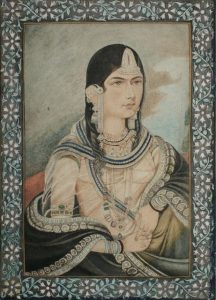 Interestingly, Amma Maharani was a vegetarian, avoiding meat, fish, and poultry, but the banquet table was decorated with various dishes. Meat, poultry, and fish dishes were prepared in a separate kitchen. The best kind of wine was served for the sake of the guests. Spilled wine in expensive bulwark jars and fragrant dishes decorated in kababs were the lifeblood of Travancore banquets.
Interestingly, Amma Maharani was a vegetarian, avoiding meat, fish, and poultry, but the banquet table was decorated with various dishes. Meat, poultry, and fish dishes were prepared in a separate kitchen. The best kind of wine was served for the sake of the guests. Spilled wine in expensive bulwark jars and fragrant dishes decorated in kababs were the lifeblood of Travancore banquets.
The people of the royal family were vegetarians and used only water instead of alcohol. It is said that, given the old traditions and according to the rules made by Amma Maharani, there are still two types of kitchens in Travancore. One serves traditional South Indian vegetable dishes, and the other kitchen prepares Western-style meat, fish, and chicken dishes.
This is the decision of the conscience of the collective intellect, and above all, it is the command of God and the messengers. Eat good and clean food and feed other human beings that work brings reward and honor.
